Avocado Salsa
Avocado salsa is more than just a delicious sauce; it’s a celebration of Mexico’s vibrant local produce.
As the world’s top producer of avocados, Mexico continues to showcase this creamy fruit in traditional recipes that have been passed down for generations.
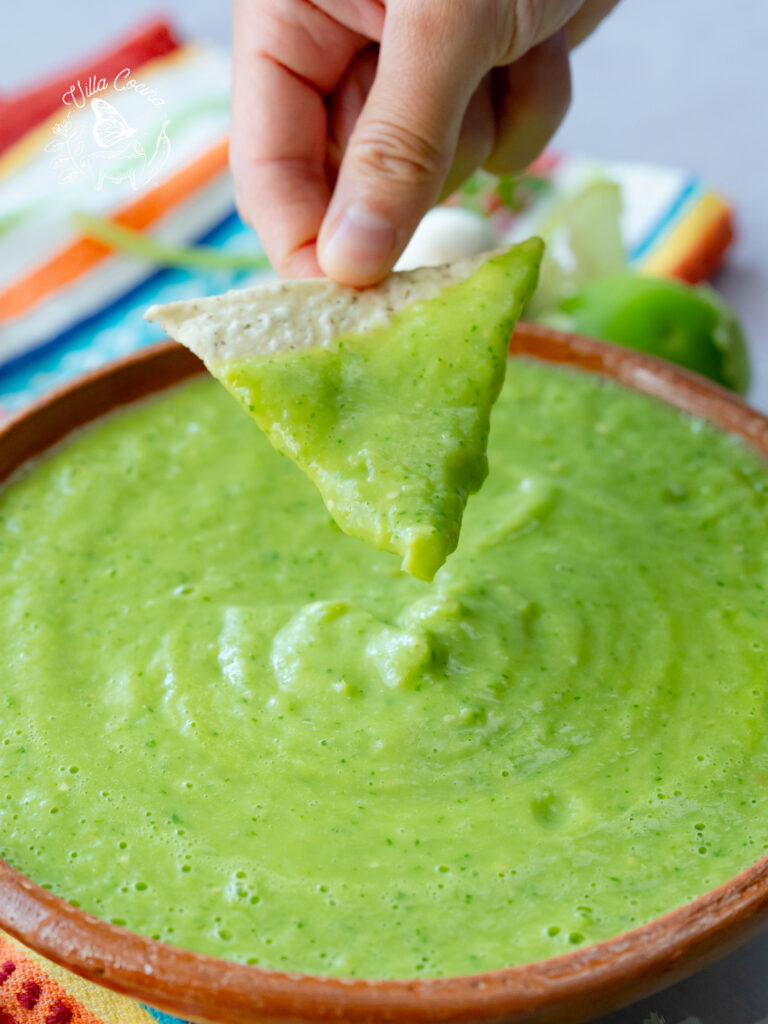
More than a simple topping, the right salsa ties together the dish’s components, adding a fresh burst of heat, acidity, or creaminess. From rich mole to spicy pico de gallo, each salsa brings its own unique qualities to elevate Mexican food.
What is Salsa?
In Mexican cuisine, salsa dates back to pre-Columbian times, when indigenous people used local ingredients to bring flavor and color to their meals.
Salsas had to be visually inviting because, as they knew, we eat with our eyes first. That’s why a well-displayed salsa bar looks so vibrant and colorful today. With ingredients like tomatoes, tomatillos, peppers, and herbs, you can mix and match for endless variety.
The cooking process also shapes the flavor of salsa. Whether you’re roasting, boiling, baking, or using a traditional Mexican method like cooking directly over hot wood charcoal, each technique impacts the salsa’s color and depth of flavor.
What Is Avocado Salsa?
Avocado salsa is a creamy and tangy delight, featuring a spicy kick from serranos, or jalapeños that help preserve its vibrant green color. Blended with tomatillos, garlic, and cilantro, it achieves a smooth, velvety consistency, speckled with fresh cilantro.

This salsa is the perfect complement to dishes like Birria Quesa Tacos, Barbacoa, Discada, Pollo Loco, Tacos de Alambre, and Carnitas. It also makes a delicious dip for chips, adding a creamy and zesty flair.
Avocado Salsa vs. Guacamole
Avocado salsa and guacamole differ significantly in consistency and flavor. This green salsa has a smooth, drizzleable texture that delivers a vibrant, tangy kick from tomatillos.
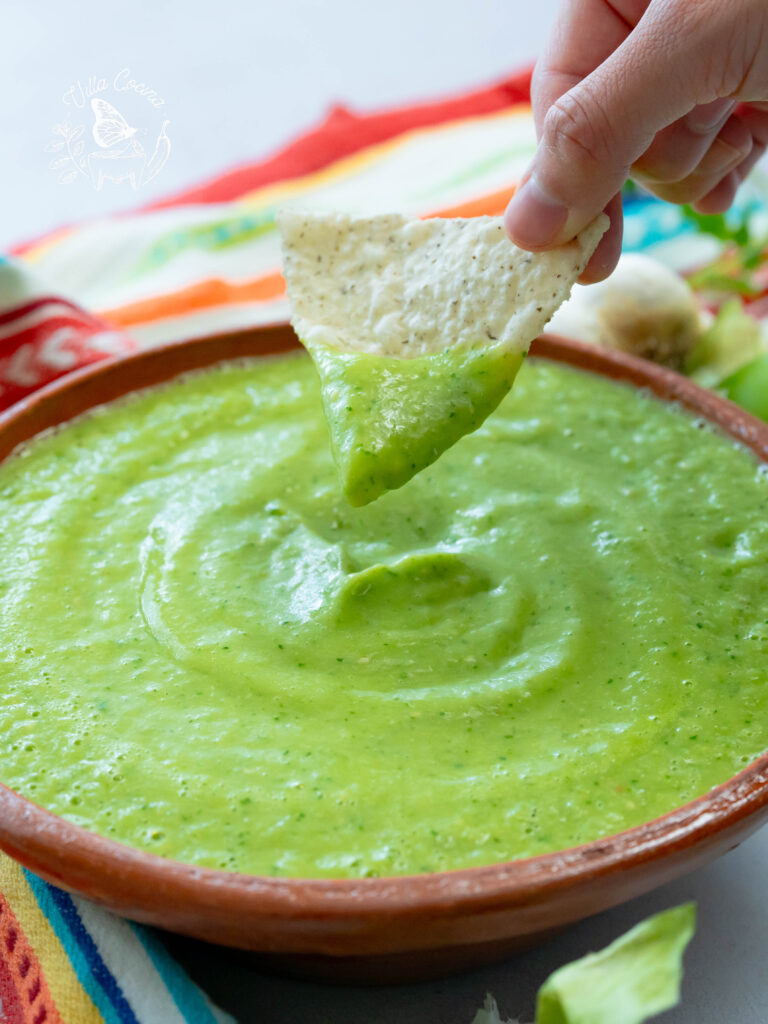
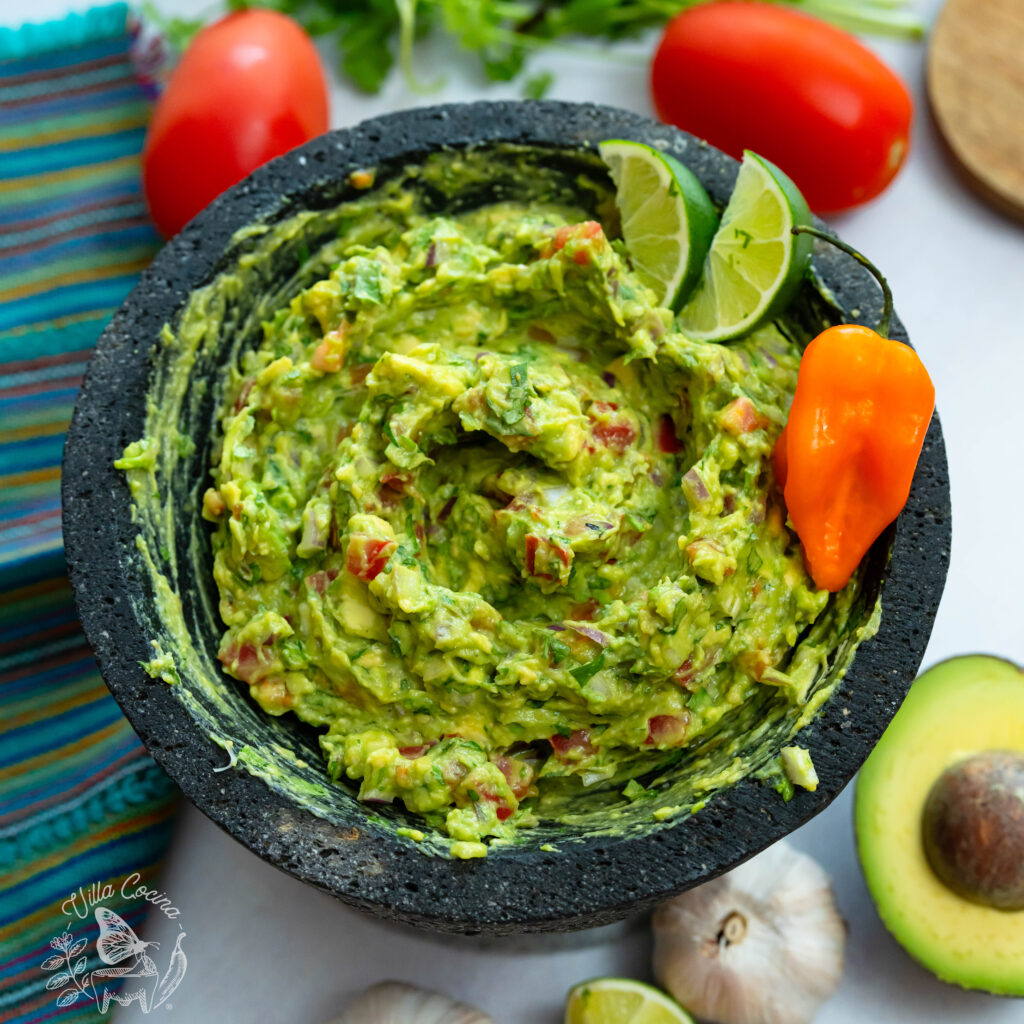
In contrast, guacamole is thicker and chunkier, highlighting the creamy richness of the avocado with a more pronounced variety of textures from its ingredients. These differences make each condiment great for different culinary uses.
Ingredients
- Tomatillos are small, round fruits known for their tangy and acidic qualities, making them a popular ingredient in salsas and sauces.
- Serrano peppers are known for their grassy flavor and significant heat, making them a bold choice.
- For those looking for a milder option, jalapeños are a great alternative, offering a gentler heat level.
- To further reduce the heat in your salsa, you can use fewer peppers or remove the seeds and inner membranes, which contain most of the capsaicin—the compound responsible for the heat.
- White onion adds a bright, crisp flavor to salsa, enhancing its overall taste and texture. Its long-standing use in Mexican cuisine makes it an essential ingredient.
- Garlic is a common ingredient known for its rich, nutty flavor that gets milder but deeper as it cooks. Adding a small piece of raw garlic to salsa gives it a fresh, bold kick.
- Cilantro brings a fresh, bright flavor that enhances the herbal and citrusy tones in salsa.
- Avocado is a fruit with bright green flesh that turns creamy, smooth, buttery, and slightly sweet when ripe. Often referred to as “butter from a tree,” a versatile ingredient in both savory and sweet dishes.
- Lime juice adds bright, citrusy tones that awaken the flavors in salsa, bringing everything to life.
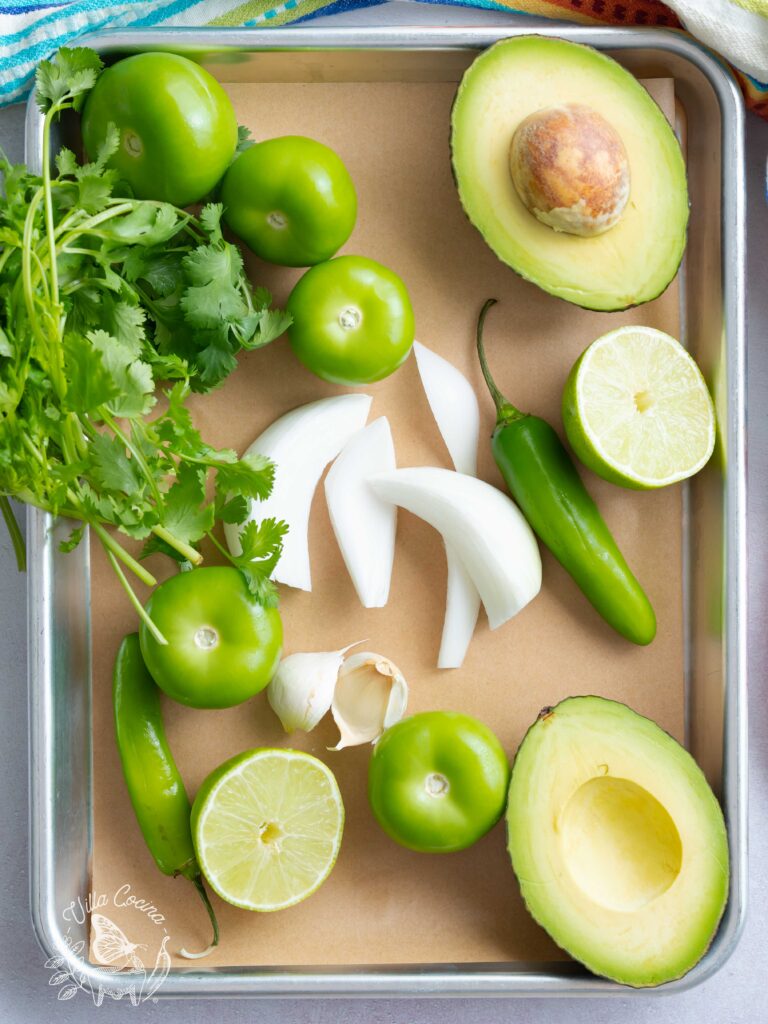
Recipe Video Tutorial
Below is my easy to follow video tutorial on how to make this Avocado Salsa.
Enjoyed the video? Subscribe and tap the bell for updates on new recipes. Thank you for your support!
How To Make Avocado Salsa?
Preheat the oven to 425°F.
Make a small incision in the center of each serrano pepper. Place the peppers, tomatillos, onion, and two unpeeled garlic cloves on a parchment-lined baking sheet.
Drizzle with avocado oil.
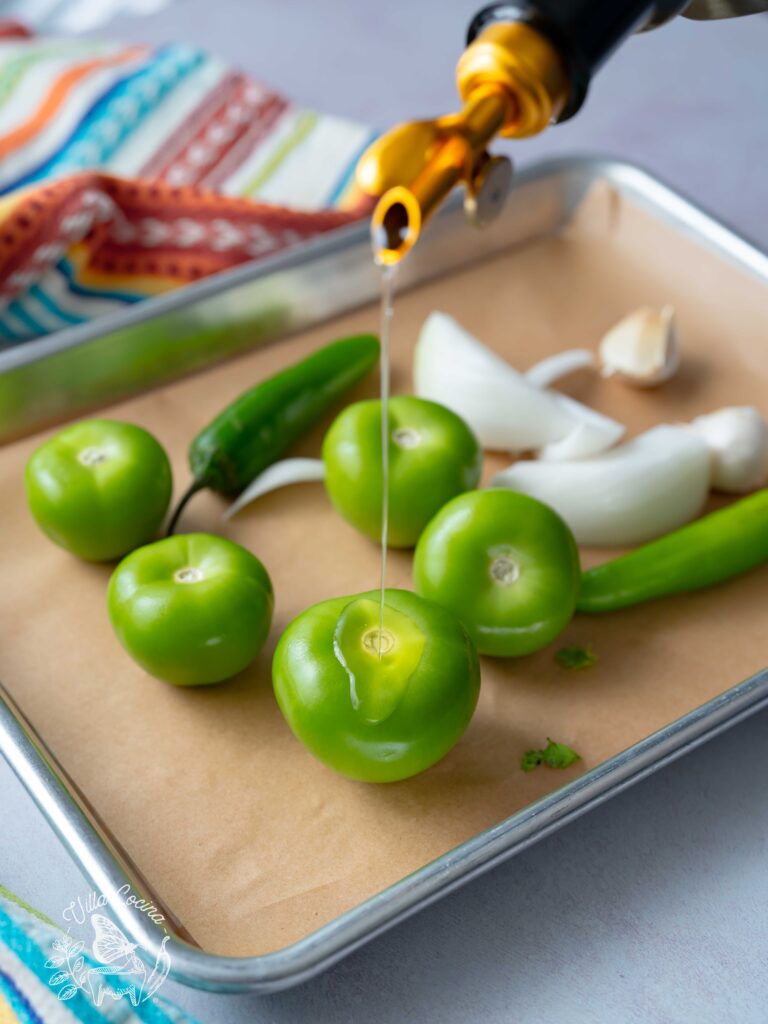
Then roast in the oven for 15-20 minutes, or until cooked through; remove and let cool.
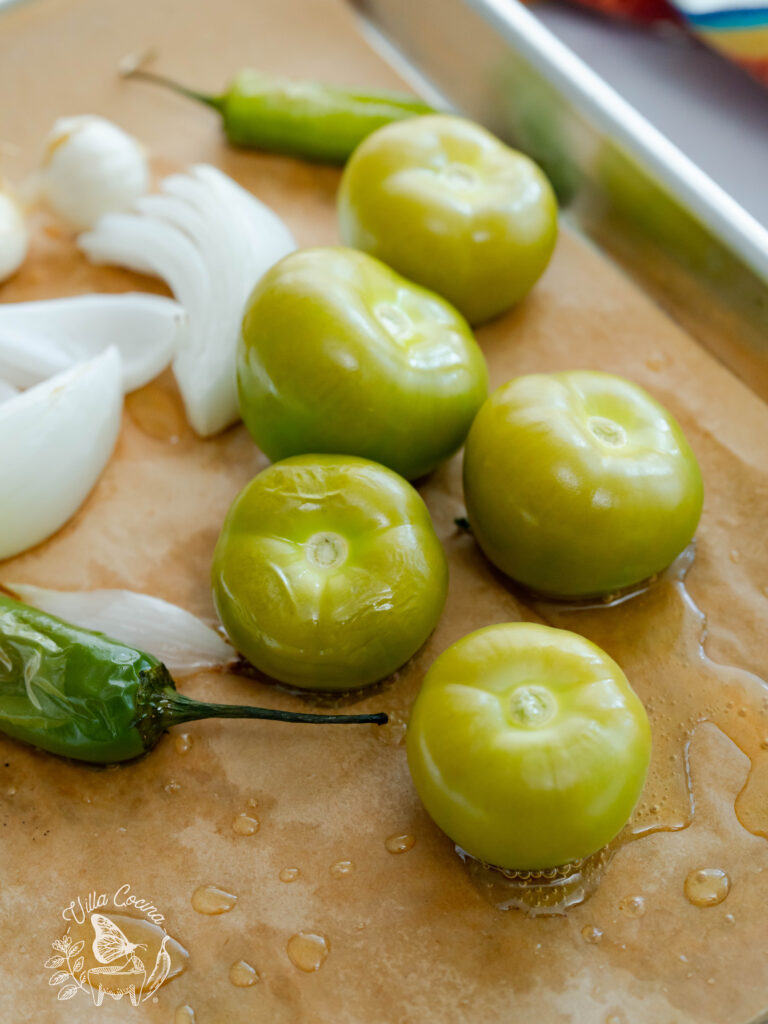
Transfer the roasted vegetables into a blender, peeling the garlic and removing the stems from the peppers first.
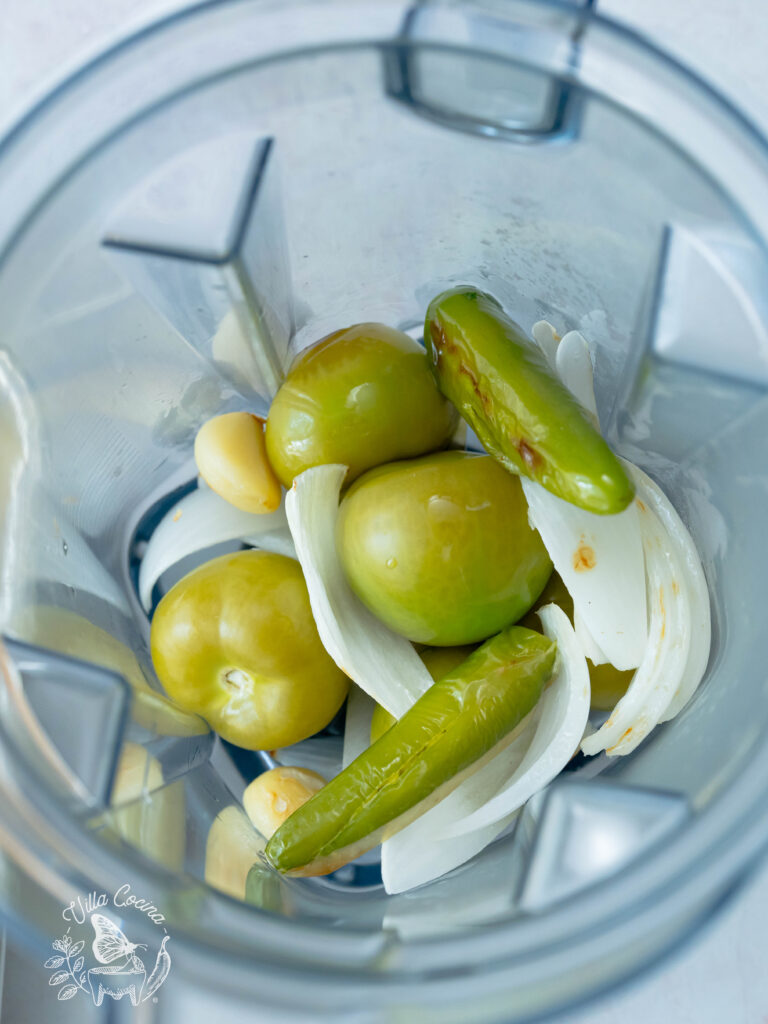
Then add the cilantro, raw garlic clove, avocado flesh, lime juice, salt, and water.
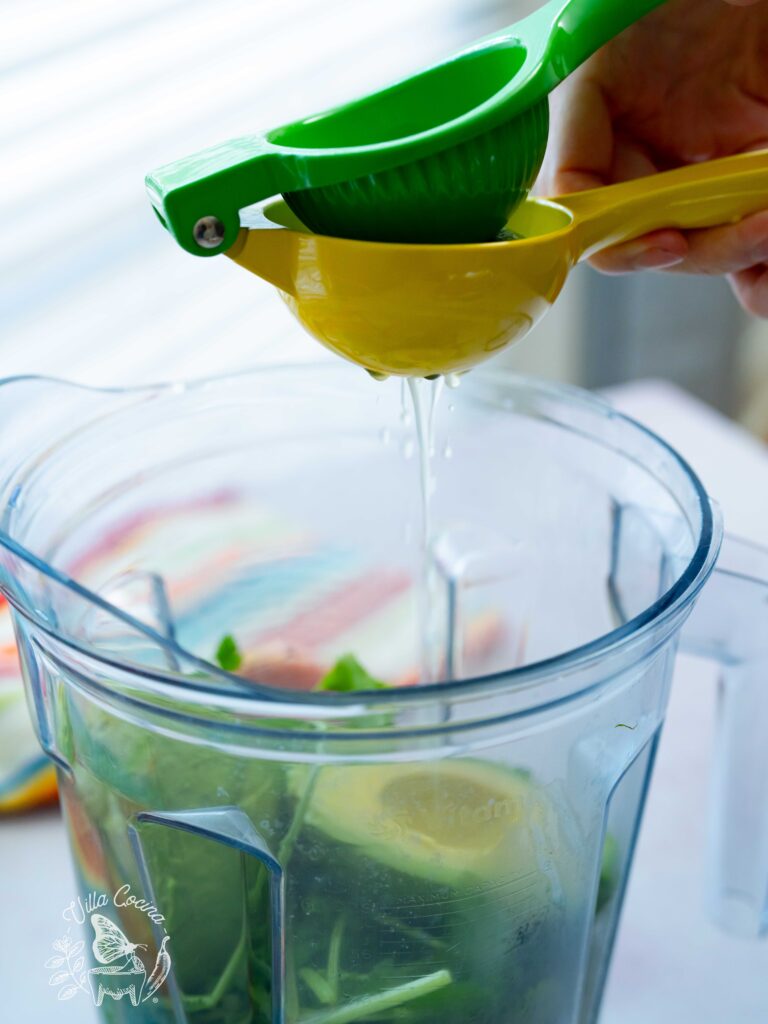
Blend until smooth, leaving a few specks of cilantro; then transfer to a bowl and adjust the salt to taste.

Pair Your Avocado Salsa With These:

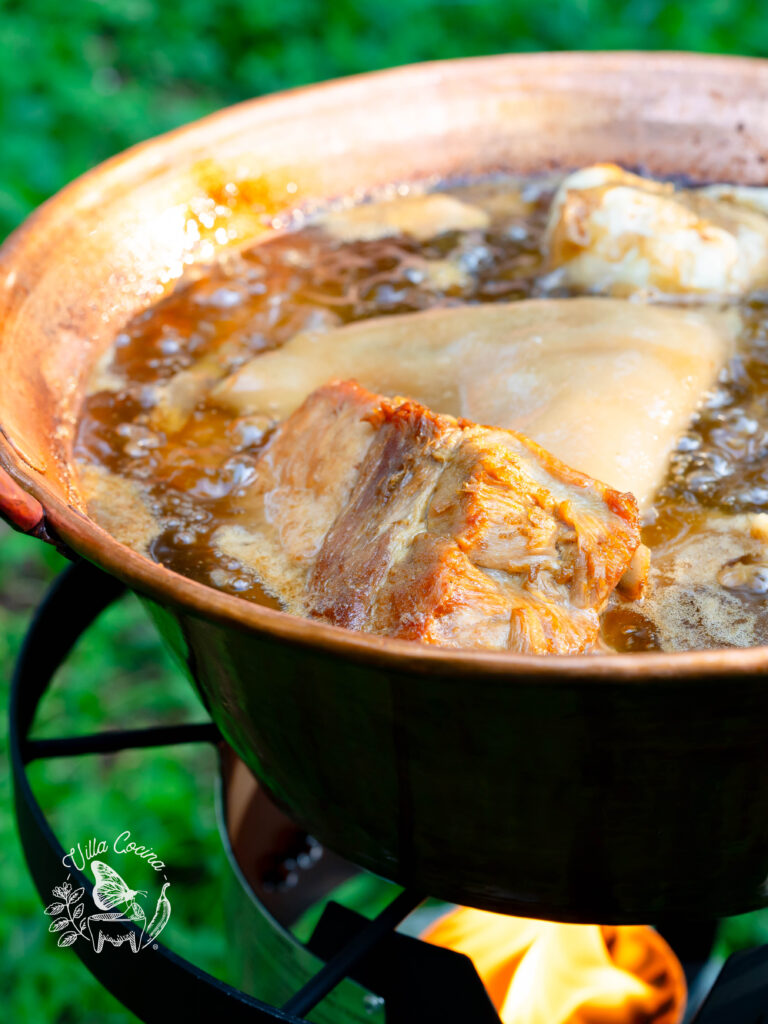
Storage
Storing avocado after it has been cut can be tricky, but the tomatillos and lime juice in avocado salsa help prevent browning.
To store any leftover salsa, place it in an airtight container and keep it in the fridge, where it can last for up to a week.
FAQs : Your Questions Answered
Q: Can I make avocado salsa ahead of time?
A: While you can prepare avocado salsa a few hours in advance, it’s best to serve it fresh. The acidity of the tomatillos and lime juice helps preserve its color and freshness, but it tastes best when freshly made. Be sure to store it in airtight containers to maintain its quality.
Q: How do I make avocado salsa spicier?
To make your avocado salsa spicier, add more peppers like serranos or jalapeños. You can also include the seeds and membranes from the peppers, which contain much of the heat.
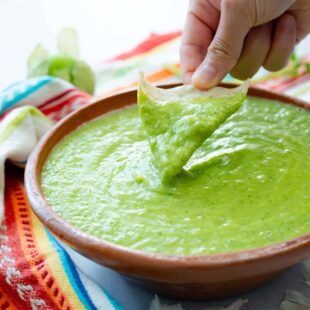
Avocado Salsa
Ingredients
Oven
- 1/2 lb tomatillos, peeled and rinsed
- 2 serrano peppers
- 1/4 white onion, thin wedges
- 2 garlic cloves, unpeeled
- Drizzle of avocado oil
Blender
- 1/4 bunch cilantro
- 1 small raw garlic clove, peeled
- 1 large avocado
- 1 tbsp lime juice
- 1 cup water
- To taste salt
Instructions
Oven
- Preheat the oven to 425°F.
- Make a small incision in the center of each serrano pepper. Place the peppers, tomatillos, onion, and two unpeeled garlic cloves on a parchment-lined baking sheet.
- Drizzle with avocado oil, then roast in the oven for 15-20 minutes, or until cooked through; remove and let cool.
Blender
- Transfer the roasted vegetables into a blender, peeling the garlic and removing the stems from the peppers first; then add the cilantro, raw garlic clove, avocado flesh, lime juice, salt, and water.
- Blend until smooth, leaving a few specks of cilantro; then transfer to a bowl and adjust the salt to taste.
Did you make this recipe?
Show some love! Tag @villacocinaofficial on Instagram and drop a 5-star review. Your support means everything—thanks!


Traci
I’ve made this salsa a couple of times now… it’s amazing! I’ve followed the recipe as written.. spot on delicious!
Villa Cocina
It’s such a flavor-packed salsa, isn’t it? Thanks for sharing your experience!
Christian Vargas
Loved this, my husband wants me to make it all the time now!
Villa Cocina
That’s awesome! So glad you both are enjoying it.